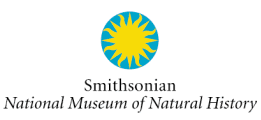Global Volcanism ProgramVolcanoes of the WorldVolcanoes of Canada and the western USA |
 |
Global Volcanism ProgramVolcanoes of the WorldVolcanoes of Canada and the western USA |
 |
Regional Volcanology Highlights from Simkin and Siebert, 1994.
This region was originally titled "USA" by the organizers of the CAVW, but we added Canada. If we add the US volcanoes here to those of Alaska and Hawaii, we find 53 historically active volcanoes, placing the US third (behind Indonesia and Japan, and narrowly ahead of Russia's 52) in this dubious national ranking. If the Commonwealth of the Northern Marianas Islands is included, the number of historically active volcanoes rises to 60, and approaches Japan's total of 63.
Volcanoes of Region 12 occupy tectonic environments ranging from the subduction volcanism that dominates the Cascade Range to the extensional tectonics controlling vast regions of the western interior, giving Region 12 the largest number (and percent) of volcanoes consisting primarily of cinder cone fields.
Only Mount St. Helens and Lassen volcanoes in this region have had unequivocal eruptions in this century whereas 34 have earlier dated eruptions, a lower ratio than any other region and a striking contrast to a region like Indonesia where 83% of its dated eruptions were in this century. Globally, only 20% of dated eruptions are pre-historic, but this proportion is 79% in Region 12, testifying to the strong attention paid to the recent geologic record. The next closest region is the West Indies, with 36% pre-historic. Region 12 has the largest number of Holocene eruptions dated by radiocarbon (126), by dendrochronology (10), and by magnetics (10).
Native American legends describe eruptions of Sunset Crater, Arizona, now dated to 1064-65 AD, and Canadian Indian legends record a British Columbian eruption in the 18th century. After the historic voyages of Columbus, Spain dominated exploration of North America in the 16th century, with the Grand Canyon first viewed by western eyes in 1540 and the Oregon coast only 4 years later. Permanent inland settlement of Santa Fe came in 1609, only two years after the first settlement on the east coast by the British. The founding of the Massachusetts Bay Colony in 1630 started the great emigration to eastern North America. Exploration of the west was slow, though, and it was not until the 1770s that Captain Cook closed the gap between Spaniards working north along the coast and Russians moving toward them from the far northwest. Cook brought publicity to the Pacific coast, and by the end of the century ships from six nations were busily trading furs along seacoasts that 20 years earlier had not been seen by Europeans. The first documented eruption in the region was California's Shasta, in 1786. By that year every other region in the world, except Antarctica, had logged at least one historical eruption, and Region 01 had logged 56% of its historical eruptions.
In the latter half of the 18th century, while the US was gaining independence in the east, the Rocky Mountains were being explored by the British and French. In 1805 Lewis and Clark sighted the Pacific, and the first historical eruptions of Mount St. Helens were witnessed by settlers in the 1830s. In 1841 the first wagon train reached the Oregon Territories, and in 1848 gold was discovered in California. It was not until the end of the Civil War, though, that westward emigration exploded: the first transcontinental railroad was completed in 1869, and by 1890 the US Census Bureau Director declared that the American frontier was at an end. The US Geological Survey was founded in 1879 and from 1926 through 1931 operated a volcano observatory at Lassen, following that volcano's 1914-17 eruption. The second Cascade eruption of the century, at Mount St. Helens, brought the founding of the eminent Cascades Volcano Observatory by the USGS in 1980.